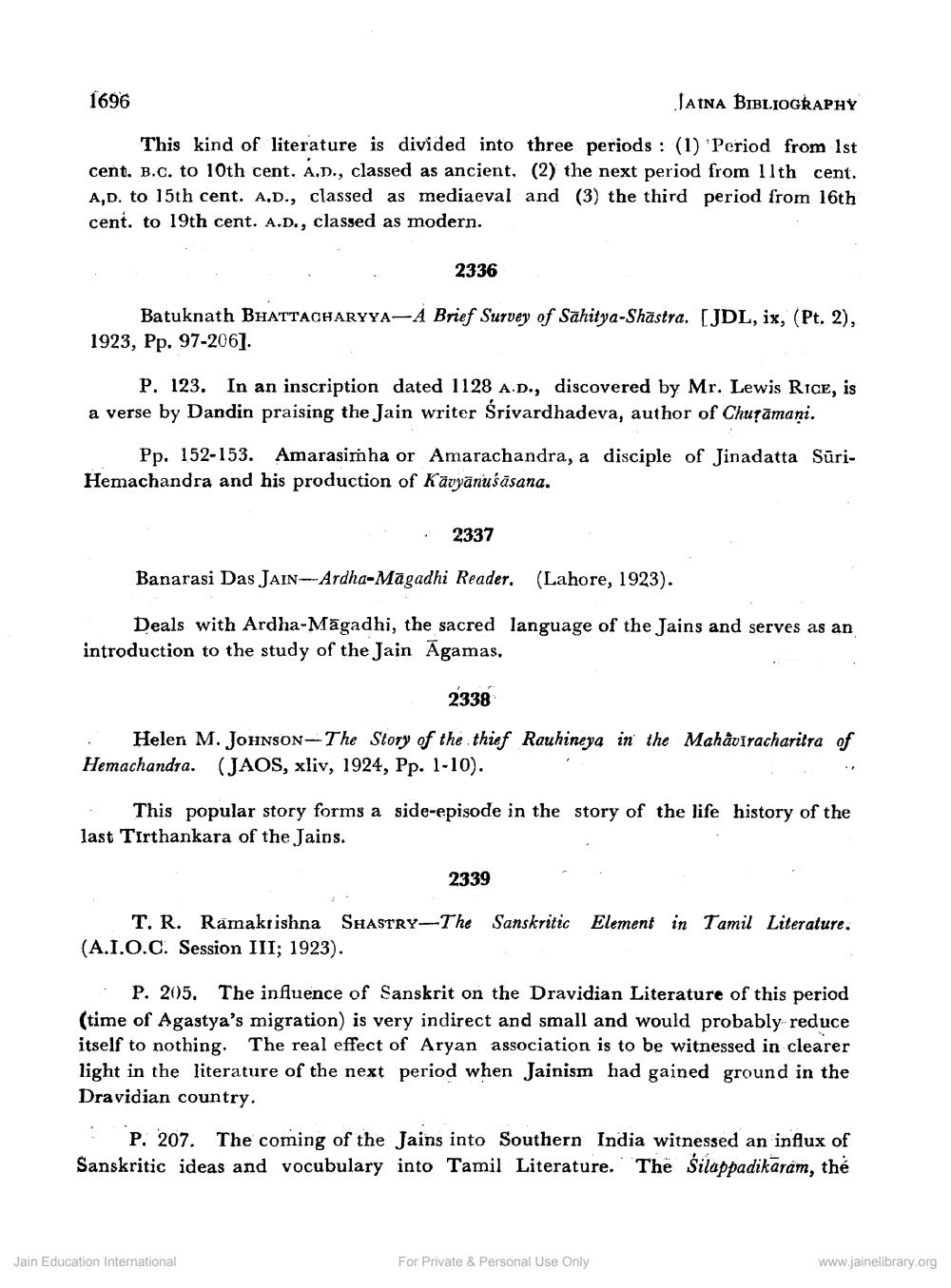________________
JAINA BIBLIOGRAPHY
This kind of literature is divided into three periods: (1) Period from 1st cent. B.C. to 10th cent. A.D., classed as ancient, (2) the next period from 11th cent. A,D. to 15th cent. A.D., classed as mediaeval and (3) the third period from 16th cent. to 19th cent. A.D., classed as modern.
1696
2336
Batuknath BHATTACHARYYA-A Brief Survey of Sahitya-Shastra. [JDL, ix, (Pt. 2), 1923, Pp. 97-206].
P. 123. In an inscription dated 1128 A.D., discovered by Mr. Lewis RICE, is a verse by Dandin praising the Jain writer Śrivardhadeva, author of Churāmaṇi.
Pp. 152-153. Amarasimha or Amarachandra, a disciple of Jinadatta SūriHemachandra and his production of Karyanulasana.
2337
Banarasi Das JAIN-Ardha-Magadhi Reader. (Lahore, 1923).
Deals with Ardha-Magadhi, the sacred language of the Jains and serves as an introduction to the study of the Jain Agamas.
2338
Helen M. JOHNSON-The Story of the thief Rouhineza in the Mahaviracharitra of Hemachandra. (JAOS, xliv, 1924, Pp. 1-10).
This popular story forms a side-episode in the story of the life history of the last Tirthankara of the Jains.
2339
T. R. Ramakrishna SHASTRY-The Sanskritic Element in Tamil Literature. (A.I.O.C. Session III; 1923).
Jain Education International
P. 205. The influence of Sanskrit on the Dravidian Literature of this period (time of Agastya's migration) is very indirect and small and would probably reduce itself to nothing. The real effect of Aryan association is to be witnessed in clearer light in the literature of the next period when Jainism had gained ground in the Dravidian country.
P. 207.
The coming of the Jains into Southern India witnessed an influx of Sanskritic ideas and vocubulary into Tamil Literature. The Silappadikaram, the
For Private & Personal Use Only
www.jainelibrary.org




